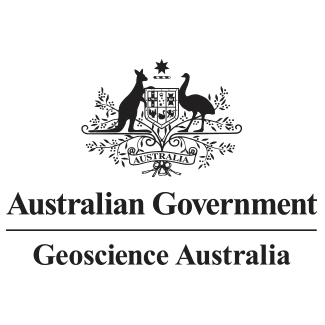Full description
The Rolling Downs Aquitard - Thickness and Extent data set, is one of a set that represents the hydrostratigraphic units of the Great Artesian Basin, which include five major aquifers, four intervening aquitards, and the Cenozoic cover to the GAB.There are five layers in the Rolling Downs Aquitard map data.
A: Formation Extent
B: Outcrop extent
C: Isopach Raster
D: Isopach Contours
E: Data Point Locations
The datasets have been derived from the lithostratigraphic intercepts in drillhole data from petroleum exploration wells, water bores, and stratigraphic wells. Seismic correlation and assessment of hydrogeological character based on electrofacies have not been used. The working datasets for this study has been derived primarily from the following databases:
1. PEPS-SA (Petroleum Exploration and Production System - South Australia) (Department of Primary Industries and Regions SA, 2011)
2. WaterConnect Groundwater database (Govt. of SA, 2011)
3. QPED (Queensland Petroleum exploration database) (Geological Survey of Queensland, 2010).
4. GABLOG (Great Artesian Basin Well Log Dataset) (Habermehl, 2001)
5. Additional supplementary information was derived from published reports listed in the following section.
This is a regional interpretation for mapping at approximately 1:1 000 000 to produce a broad scale overview, and examination of small areas by collecting extra data is most likely to produce results that differ from this regional interpretation.
This dataset and associated metadata can be obtained from www.ga.gov.au, using catalogue number 81677.
Associated report reference:
Ransley, T., Radke, B., Feitz, A., Kellett, J., Owens, R., Bell, J. and Stewart, G., 2015. Hydrogeological Atlas the Great Artesian Basin. Geoscience Australia. Canberra. [available from www.ga.gov.au using catalogue number 79790]
Lineage
Maintenance and Update Frequency: notPlanned
Statement: METHOD:
Formation Extent
Extents were based on drillhole data (see References) and from Hydrogeology of the Great Artesian Basin Australia (Habermehl & Lau, 1997) for Eromanga and Surat sub-basins. For the Carpentaria Basin, Mesozoic Geology of the Carpentaria and Laura Basins (Geoscience Australia, 2013) was used.
Extent lines were adjusted to envelop all borehole intercepts of the Hydrostratigraphic unit. This produced some varied and irregular shapes, some patchy regions, and required some interpretation to establish the most likely extent boundary.
Outcrop Extent
Outcrop extents came from Hydrogeology of the Great Artesian Basin Australia (Habermehl & Lau, 1997) for the Eromanga and Surat sub-basins. For the Carpentaria Basin, Mesozoic Geology of the Carpentaria and Laura Basins (Ransley TR & Smerdon BD, Eds., 2012) was used. Both of these were used minus the Winton-Mackunda Aquifer and the Cenozoic cover.
Isopach Raster
Source point thickness values calculated from drillhole intercepts were extrapolated using the ESRI ANUDEM Topo-To-Raster surface modeller. Zero thickness constraints were applied at the known extent of the aquifer/aquitard, except in cases where the formation extends beyond the GAB boundary (for example the Precipice formation on the eastern side of the GAB, where the formation is quite thick and is exposed as a cliff). In these cases, constraints were not applied and the software was allowed to model a thickness right up to the GAB boundary. Resulting grids were modified using the ESRI Grid Calculator to set the minimum thickness to 0, and clipped to the aquifer/aquitard extent.
Isopach Contours
For a regional picture of the offshore Carpentaria Basin, the thickness of the Normanton Formation and Rolling Downs Aquitard offshore is based on seismic thickness for the entire Rolling Downs Group (RDG) (see references to seismic surveys). Offshore Carpentaria Rolling Downs Group (RDG) cannot be differentiated using seismic surveys, so we have assumed 75% of RDG total thickness is Rolling Downs aquitard, based on stratigraphy in well completion reports for Duyken 1 (Blake et.al. 1984) and Mornington 1 & 2 (Harrison et al. 1961).
For the onshore Carpentaria Basin, well completion reports of individual wells (see References), as well as BMR drill Records (Gibson et al., 1974) have been used as a source of thicknesses. Also within the onshore Carpentaria region, lithostratigraphic revision based on electrofacies (McConachie et al., 1994) has enabled distinction of lithostratigraphic units within the onshore Rolling Downs Group north of the Staaten Sub-basin.
Isopach contours were calculated from the Rolling Downs Aquitard thickness grid using the ESRI Contour Tool. These were calculated at 50m intervals. In most cases the zero contour lines generated by the tool were replaced by the extent of the aquifer due to the erratic nature of the generated lines. In cases where the aquifer/aquitard is thick at the extent, the zero isoline is outside the extent and is not mapped in that area. Isopachs were clipped to the aquifer/aquitard extent.
Data Point Locations
Data Point Locations have been derived from the bore hole data collected for this project. Only the location has been included.
SOFTWARE:
All modifications/edits and geoprocessing were performed using ESRI ArcGIS 10 software.
Issued: 2015
Modified: 08 04 2019
text: westlimit=132.07; southlimit=-33.69; eastlimit=153.18; northlimit=-9.01
Subjects
Earth Sciences |
GIS Dataset |
NSW |
NT |
Published_External |
QLD |
Regional |
SA |
geoscientificInformation |
User Contributed Tags
Login to tag this record with meaningful keywords to make it easier to discover
Other Information
Download the data (shp)
Identifiers
- Local : pid.geoscience.gov.au/dataset/ga/81677
- global : fc3eec81-5e50-6f5c-e044-00144fdd4fa6


